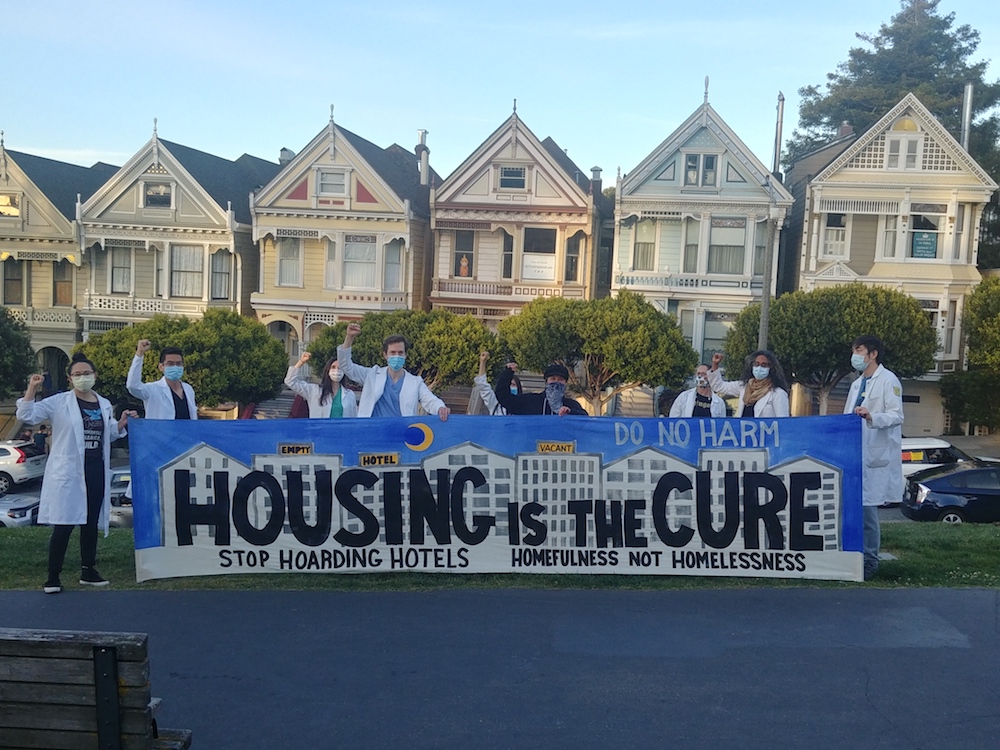Mayor London Breed’s Tenderloin Emergency Initiative claims to emphasize reducing drug overdoses among the unhoused community in the neighborhood. However, as the Coalition of Homelessness stated in a press release on Dec 28, 2021, the plan does not detail solutions to “actually address drug overdose.”
Instead, the Coalition says, the city (among other solutions) should fully implement the Compassionate Alternative Response Team (CART).
It would cost as little as $6 million to fully fund the project—a miniscule part of the city’s budget—but as of now, there are no CART teams on the street.

CART has only partial funding, $3 million from the supervisors. Its goal is to create a community-based alternative to the police response to homelessness. Instead of increasing police presence among the unhoused community, CART brings together stakeholders including community organizations, city departments, elected officials, unhoused constituents, service providers, advocates and academics to “envision a new kind of street response,” according to the CART team’s website.
“The idea is to have very extensively trained and well-paid peer teams that look like and are of the community,” said Jennifer Friedenbach, executive director of the Coalition of Homelessness. These teams, comprised of unhoused people themselves and their peers, would serve as an alternative to police response when it comes to our unhoused neighbors.
Originating from a San Francisco Police Commission resolution in January 2020, CART is designed with two main components. The first is a dispatch response that provides a “specialized police-alternative dispatch response” to calls from folks in crisis situations, according to the CART team’s Community Plan. This includes establishing a new hotline for individuals to call CART directly.
The second component includes a “community-strengthening hub to empower housed neighbors to more compassionately respond directly to their unhoused neighbors.” Recommendations include funding staff for 24 hours a day, seven days a week and clearly distinguishing the appearance of CART staff from law enforcement.
On the ground, Friedenbach said, CART teams would be dispatched to mediate conflicts. For instance, if an unhoused person is accidentally blocking someone’s doorway, preventing them from leaving their house, the peer responder will “center the unhoused person and try to connect them with the service that they need but also address the issue of the doorway so the person who’s trying to get out can get out.”
For the past several years, the CART working group has been working on implementing the plan. Friedenbach told us that while CART was funded in part by the supervisors, it has been stalled by the Mayor’s Office.
Friedenbach said that while the Mayor’s office allocated the implementation of CART to the Department of Emergency Management, they should also be coordinating with the Behavioral Health Division of the Department of Public Health. This way, the CART team can be sent out at appropriate times in coordination with health care providers.
Friedenbach said that the CART team will require additional funding to go citywide. Action items include writing the request for proposals, working out the dispatch protocol, and hiring and training the peer staff that will be executing mediations. Instead of focusing on the visibility of unsheltered homelessness in their current Tenderloin plan, the Mayor’s Office should be hashing out these CART components and supporting the solutions that the community wants, she said.
Another critique of Breed’s Tenderloin plan is that it only included input from business interests. As the Coalition notes, “Blatantly absent are harm reduction groups, and unhoused people and drug users along with any groups that are not perceived as aligned with downtown interests.” In contrast, CART was carefully crafted by the people who are most directly impacted by and involved in street homelessness.
“From the start, the group was intentional about centering unhoused individuals in the design of the alternative,” the CART website states, “seeking their input to form the foundation of the work through a city-wide Street Survey.”
The CART working group spelled out their common values of: (1) compassion for our unhoused neighbors, (2) non-violent conflict resolution, and (3) participation of “clients/consumers” in providing input, program evaluation and critical feedback.
Tenderloin organizations have spent years advocating for compassionate responses to homelessness that draw from individuals’ lived experiences. Other solutions the community cites include working on harm reduction, ensuring that service providers have Narcan when they reach out to drug users, and spending Prop C funds according to the Our City, Our Home Oversight Committee’s recommendations.
The bottom line, Friedenbach says, is that “all the solutions need to center the folks who are out on the street. They need to be consulted in the development of solutions on behalf of them. It cannot be done without their expert advice.”



